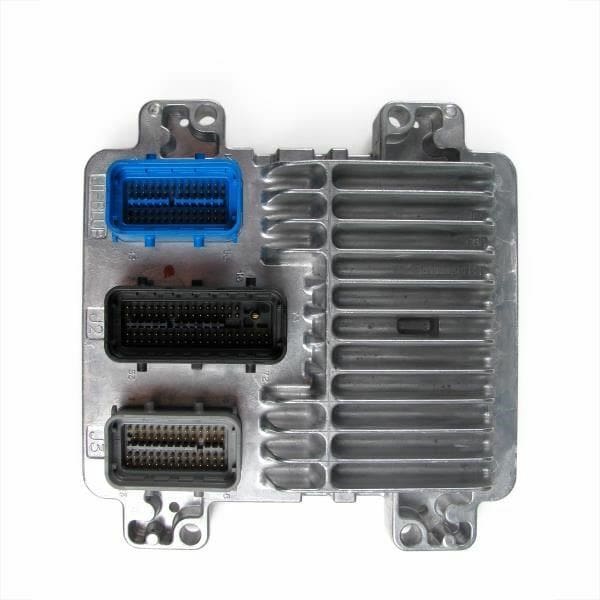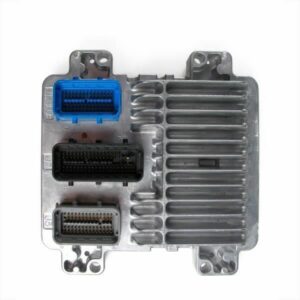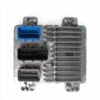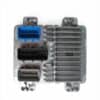Restore Your Truck’s Core Performance and Reliability
Is your 2006 Isuzu I-280 running rough, refusing to start, or flashing a persistent Check Engine Light? As a technician with over two decades of experience under the hood, I’ve seen these exact issues countless times. The culprit is often a failing Powertrain Control Module (PCM), the central computer of your vehicle. When it falters, it can cause a cascade of frustrating problems, from poor fuel economy to unpredictable stalling. This isn’t just an inconvenience; it’s a critical component for your truck’s operation and safety.
This isn’t just a replacement part; it’s a direct solution. We provide a professionally programmed PCM loaded with the latest GM software updates, specifically matched to your truck using its unique Vehicle Identification Number (VIN). This critical step ensures that once installed, the module communicates flawlessly with your engine, transmission, and all other onboard systems, restoring the smooth, reliable performance you depend on. By ordering this 2006 Isuzu I-280 PCM, you are bypassing expensive dealership programming fees and getting a dependable fix delivered to your door.
A Technician’s Notebook: The Intermittent No-Start Mystery
I remember a 2005 Chevy Colorado that came into the bay on a tow truck. The owner was frustrated; it would start fine for a week, then be completely dead for two days. He’d already replaced the battery and checked the starter. We scanned it and found a P0601 (Internal Control Module Memory Check Sum Error) and a U0100 (Lost Communication With ECM/PCM). While wiring was a possibility, experience pointed to the PCM itself. Heat cycles and vibration had taken their toll. We installed a VIN-programmed PCM just like this one, and the truck fired up on the first try. It’s a textbook example of how a failing computer can mimic other problems, and why a reliable, correctly programmed module is the definitive fix.
Is Your Truck Exhibiting These PCM Failure Signs?
A failing PCM can manifest in various ways. If you’re experiencing any of the following, your engine computer is the likely cause. Look out for:
- ✔ The Check Engine Light is on or flashes intermittently.
- ✔ Common diagnostic trouble codes (DTCs) are present, such as P0601, P0606, or other U-series communication codes.
- ✔ Your engine cranks but refuses to start.
- ✔ Unexplained drops in fuel efficiency.
- ✔ The transmission shifts erratically, harshly, or gets stuck in one gear.
- ✔ Stalling, sputtering, or rough idling for no apparent reason.
- ✔ Failure to pass an emissions or smog test.
A Straightforward Guide to Your PCM Swap
Replacing the PCM on your Isuzu I-280 or a similar GM truck is a job most DIYers can handle with basic tools. Our pre-programmed module makes it a simple plug-and-play process. Here’s a general guide:
- Safety First: Always disconnect the negative terminal from your vehicle’s battery and wait about 10 minutes to ensure the system is fully discharged.
- Locate the PCM: On the Isuzu I-280, Chevy Colorado, GMC Canyon, and Hummer H3, the PCM is typically located on the right-hand (passenger side) firewall in the engine bay. On models like the Trailblazer or Envoy with the 4.2L engine, it’s on the left-hand (driver side) of the engine itself.
- Disconnect Connectors: Carefully unclip the wiring harness connectors from the old PCM. They often have locking tabs that need to be released. Avoid pulling on the wires themselves.
- Remove the Old Module: Unbolt the PCM from its mounting bracket. Keep the hardware, as you may need to reuse it.
- Install the New PCM: Mount your new, VIN-programmed PCM onto the bracket and securely fasten it.
- Reconnect and Secure: Firmly plug the wiring harnesses into the new module until they click into place. Reconnect your battery’s negative terminal.
- Final Check: Turn the key to the ‘On’ position (without starting the engine) for 10-15 seconds, then turn it off. Repeat this once more. This allows the vehicle’s systems to recognize the new module. Now, start your engine. The vehicle is ready to drive.
Verified Compatibility for Your Vehicle
This module is a direct-fit replacement for a wide range of GM trucks and SUVs. Please verify your vehicle is on this list. This part is compatible with service numbers: 12569773, 12588650, 12589311, 12589585, 12591647, 12591648, 12593531, 12593532, 12594430, 12594431, 12596783, 12596784, 12597521, 12597776, 12597777, 12600818, 12604438, 12604439, 12606369, 12606373, 12606374, 12606398, 12606399, 19209820, 19209821.
- Buick Rainier: 2006 (4.2L)
- Chevrolet Colorado: 2004-2006
- Chevrolet Trailblazer & Trailblazer EXT: 2006 (4.2L)
- GMC Canyon: 2004-2006
- GMC Envoy & Envoy XL: 2006 (4.2L)
- Hummer H3: 2006
- Isuzu Ascender: 2006 (4.2L)
- Isuzu I-280: 2006
- Isuzu I-350: 2006
- Saab 9-7X: 2006 (6 Cylinder)
Why do I need to provide my VIN?
Why do I need to provide my VIN?
Your VIN is essential because it allows us to program the PCM with the exact software calibration for your truck’s specific engine, transmission, and options. This ensures perfect compatibility and function right out of the box, eliminating the need for a trip to the dealer for programming.
Will this 2006 Isuzu I-280 PCM fix my check engine light?
If the check engine light is caused by an internal failure of the PCM (like codes P0601 or P0606), then yes, this part is the correct solution. However, if the light is on due to a faulty sensor or other component, you will still need to fix that underlying issue.
Is any other procedure required after installation?
In most cases, no. Our modules are shipped ready for installation. However, some vehicles may require a security relearn procedure, which can typically be done without special tools by cycling the ignition key. We include simple instructions if this step is necessary for your vehicle.
What happens if I keep driving with a bad PCM?
Continuing to drive with a faulty PCM can lead to more severe problems. You may experience worsening fuel economy, potential damage to the catalytic converter from an incorrect air/fuel mixture, and unpredictable stalling, which is a serious safety hazard.



